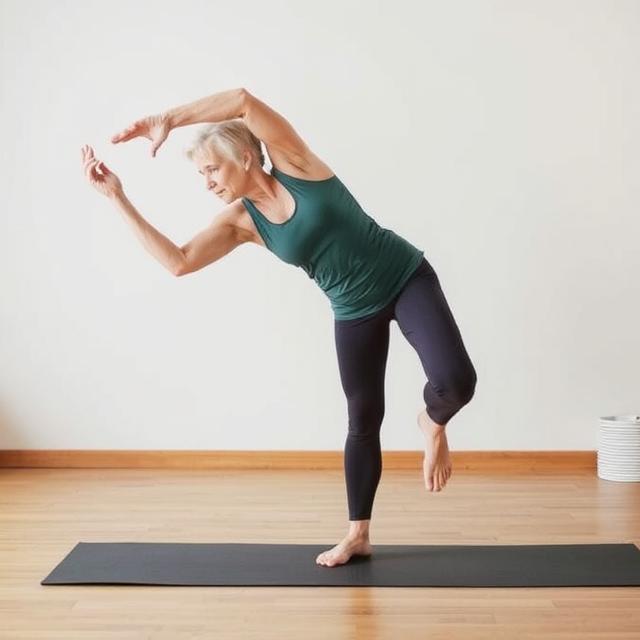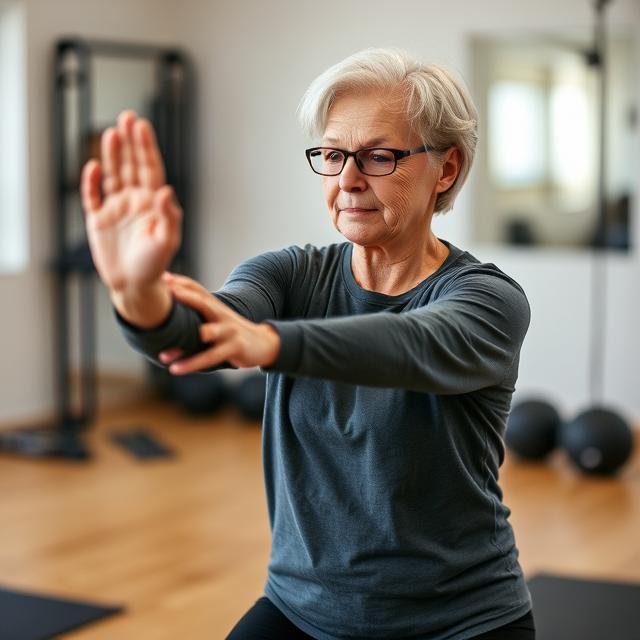Strength training isn’t just for bodybuilders or athletes—it’s a powerful, accessible tool that supports vitality, independence, and longevity, especially as we age. For seniors, engaging in strength training doesn’t mean lifting heavy weights or engaging in punishing workouts. Rather, it’s about preserving mobility, maintaining bone density, preventing falls, and boosting confidence. If you’re new to strength training or haven’t worked out in years, don’t worry. You don’t need a gym membership or fancy equipment to get started. The key is to begin gently and build gradually. Below are seven easy and gentle steps tailored for older adults to start strength training safely and effectively. Each step is designed to ease you into movement, build confidence, and support overall wellness without overwhelming your body.
1. Start With a Doctor’s Green Light
Before picking up even the lightest dumbbell, consult with your healthcare provider. This is the most important step for seniors beginning any exercise regimen, especially strength training. Your doctor can assess your current health condition, any medication interactions, bone or joint issues, or cardiovascular concerns that might affect your ability to exercise safely. They may also refer you to a physical therapist or certified trainer familiar with senior fitness. This consultation ensures you’re not putting undue stress on areas of the body that might be vulnerable, such as arthritic joints, a weak back, or a recent surgical site. Moreover, your physician may suggest specific exercises to focus on for your unique needs. Taking this precaution builds a foundation of safety and confidence, helping you approach your new strength routine with peace of mind. It’s also a great opportunity to set personal goals—whether that’s improving your balance, being able to walk longer distances, or just feeling stronger during daily activities. Getting a professional thumbs-up isn’t just about caution—it’s about creating a personalized roadmap to success.

2. Begin With Bodyweight Exercises
You don’t need weights to build strength—your body is the perfect starting tool. Bodyweight exercises help you build a solid foundation without overloading your joints or muscles. Movements like wall push-ups, sit-to-stand from a chair, toe stands, and heel raises can significantly improve strength in key muscle groups used for daily tasks. These exercises also enhance balance and coordination, crucial for preventing falls. They can be done anywhere, anytime, and adapted for any fitness level. For instance, wall push-ups work your chest, shoulders, and triceps, while sit-to-stands build leg strength and mirror the act of getting up from a chair—an essential function for independence. Focus on slow, controlled movements. Aim to do a few repetitions of each, maybe 5 to 10, and gradually increase as you become stronger. Don’t rush—quality over quantity is key. Practicing these movements 2–3 times per week will help your muscles “wake up” and get used to working again. Once you feel more confident and balanced, you can think about adding light resistance. But for now, just let your body learn how to move again with purpose.

3. Use Resistance Bands for Gentle Toning
Resistance bands are a fantastic next step after mastering bodyweight movements. They’re inexpensive, portable, and easy on joints while providing enough resistance to build muscle effectively. With resistance bands, you can perform a wide range of exercises that target the arms, legs, shoulders, back, and core—all without straining your body. Exercises like bicep curls, seated rows, leg presses, and shoulder raises become safer and more manageable with bands than with free weights. The beauty of resistance bands lies in their flexibility. You can adjust the intensity by simply shortening or lengthening the band, or switching to a band with more resistance. They also support fluid movements, which helps protect joints and ligaments from sudden pressure. Start with light resistance and perform slow, controlled reps—about 10 to 15 per exercise. Use a chair for support if needed. This method not only strengthens muscles but also improves joint stability and coordination. Over time, consistent resistance band training can help restore posture, improve grip strength, and ease everyday movements like lifting groceries or reaching for high shelves. It’s strength training with a gentle touch—perfect for beginners.

4. Incorporate Balance and Core Exercises
A strong core is your body’s center of gravity—it supports almost every movement you make, from getting out of bed to standing on one foot. For seniors, strengthening the core also reduces the risk of falls and enhances overall stability. Gentle balance and core exercises don’t require fancy gym gear; they just need focus and intention. Start with simple movements like standing on one foot while holding onto a chair, or gentle seated marches that engage your abdominal muscles. Pelvic tilts, bird-dog stretches (on hands and knees), and leg lifts while lying down are also excellent. The goal isn’t to sculpt a six-pack but to create a resilient core that supports your spine and improves your body’s control. As you progress, try balancing with your eyes closed or standing on a softer surface like a cushion to increase challenge. These exercises can be done for a few minutes daily, gradually increasing time and complexity as you gain confidence. Building core strength and balance also positively impacts posture, breathing, and digestion. It’s a subtle but transformative part of a strength-training routine—one that improves not only how you move, but how secure you feel when moving.

5. Focus on Functional Movements
Functional movements are exercises that mimic the activities you do in everyday life—bending, lifting, reaching, and walking. Focusing on these helps make your body more efficient and better equipped for real-world tasks. Movements like squats, step-ups, and carrying light loads are simple yet powerful when done consistently. For example, practicing squats helps you sit and stand with ease, while light carrying (like holding small water jugs or grocery bags) prepares you for errands and housework. These exercises build strength where it matters most—in the muscles you use every day. Keep the motions slow and intentional. Use chairs, walls, or counters for support if needed. Functional exercises don’t just strengthen muscles—they improve coordination, mobility, and confidence in your body’s abilities. As you gain strength, you’ll likely notice a positive difference in daily tasks: climbing stairs feels easier, reaching overhead is smoother, and carrying laundry is no longer a strain. Think of functional strength as training for life, not just for fitness. It’s one of the most rewarding approaches to senior strength training because the benefits are immediately noticeable in the quality of everyday life.

6. Rest and Recover Mindfully
Rest is not a break from progress—it’s part of the process. As you begin strength training, your muscles need time to adapt and grow. For seniors, recovery is even more important to prevent fatigue, soreness, or injury. Rest days allow your body to heal, restore energy, and prepare for your next session. But recovery doesn’t mean complete inactivity. Gentle activities like walking, stretching, or yoga can keep your body limber while still giving it a break from strength work. Listen to your body—if a certain movement feels too intense, modify it or take a day off. Also, ensure you’re sleeping well, drinking plenty of water, and fueling your body with nutrient-rich foods that support muscle repair (think lean proteins, leafy greens, and fruits). Don’t push through pain—discomfort is a sign to slow down or adjust. Celebrate your rest days as essential parts of your training. You’re not falling behind by resting—you’re building a stronger foundation for your next workout. Consistency combined with recovery leads to steady, lasting strength gains without burnout or setbacks.

7. Celebrate Progress and Stay Consistent
Every step forward, no matter how small, is worth celebrating. Progress might mean lifting a little more, doing an extra rep, or simply feeling less stiff in the morning. Tracking these wins keeps you motivated and reminds you how far you’ve come. Keep a journal or use a calendar to mark your workout days and jot down how you felt after each session. Seeing your growth on paper can be incredibly rewarding. Consistency is more important than intensity—showing up two or three times a week builds more strength than occasional bursts of activity. Make your workouts enjoyable: listen to music, exercise with a friend, or follow a guided video. Choose a time of day when your energy is highest and turn it into a routine. Most importantly, stay patient. Results don’t happen overnight, but with steady effort, they do come. If your motivation dips, revisit your goals—why did you start this journey? Maybe it was to walk further, lift your grandchild, or simply feel more capable. Hold onto that “why.” Strength training isn’t about becoming someone else—it’s about becoming the strongest, most capable version of yourself today.

Incorporating strength training into your life as a senior is one of the best investments you can make for your long-term health and independence. It’s never too late to start, and every movement matters. By beginning gently and progressing mindfully, you create a routine that not only builds physical strength but also boosts confidence, mental clarity, and quality of life. These seven steps offer a safe, supportive path to reclaiming your vitality—without pain, pressure, or perfection. Stay consistent, listen to your body, and most of all, enjoy the process. Your stronger, more resilient self is already within reach.


